Moving to the Philippines can be such an incredible adventure! Picture this: diverse culture, breathtaking beaches, and warm-hearted and welcoming people. You will discover a whole new world in this beautiful Southeast Asian country. But before you start daydreaming too much, let's talk about the practical stuff.
In this guide, we will discuss the visa requirements, cost of living, climate, weather, transportation and travel links, safety concerns, and other practical questions you can have while moving to the Philippines.
Secure Peace of Mind with Best-Value International Health Coverage
International Citizens Insurance provide free, no-obligation quotes from the leading international health insurance providers with plans tailored to meet your needs. Trusted by thousands of expats worldwide.
In this guide:
- Philippines' highlights.
- The legalities of moving to the Philippines: visas and residency options.
- The cost of living: monthly expenses, rentals, and real estate.
- The Philippines as a retirement destination.
- Infrastructure: travel connections and public transport.
- Buying real estate.
- Healthcare and education.
- Working in the Philippines.
- Where to live in the Philippines – an overview of the most popular expat locations.
- Culture and lifestyle.
- Safety tips.
Visa and residency options
For the majority of the arrivals visiting for 30 days or less, there's no need for a visa as long as your passport is valid and you have a return ticket.
For a long non-resident stay - Tourist Visa
If you want to stay a bit longer without becoming a president, you have to apply for a Philippine Tourist Visa at a Philippine Embassy or Consulate in your home country.
The Philippines Tourist Visa allows you to stay for up to 59 days and comes in two varieties:
- Single Entry Visa valid for 3 months
- Multiple Entry Visa valid for 6 months or 12 months
If you want to stay longer than that, you must apply for a non-immigrant visa. Some of the minimum requirements for this visa include:
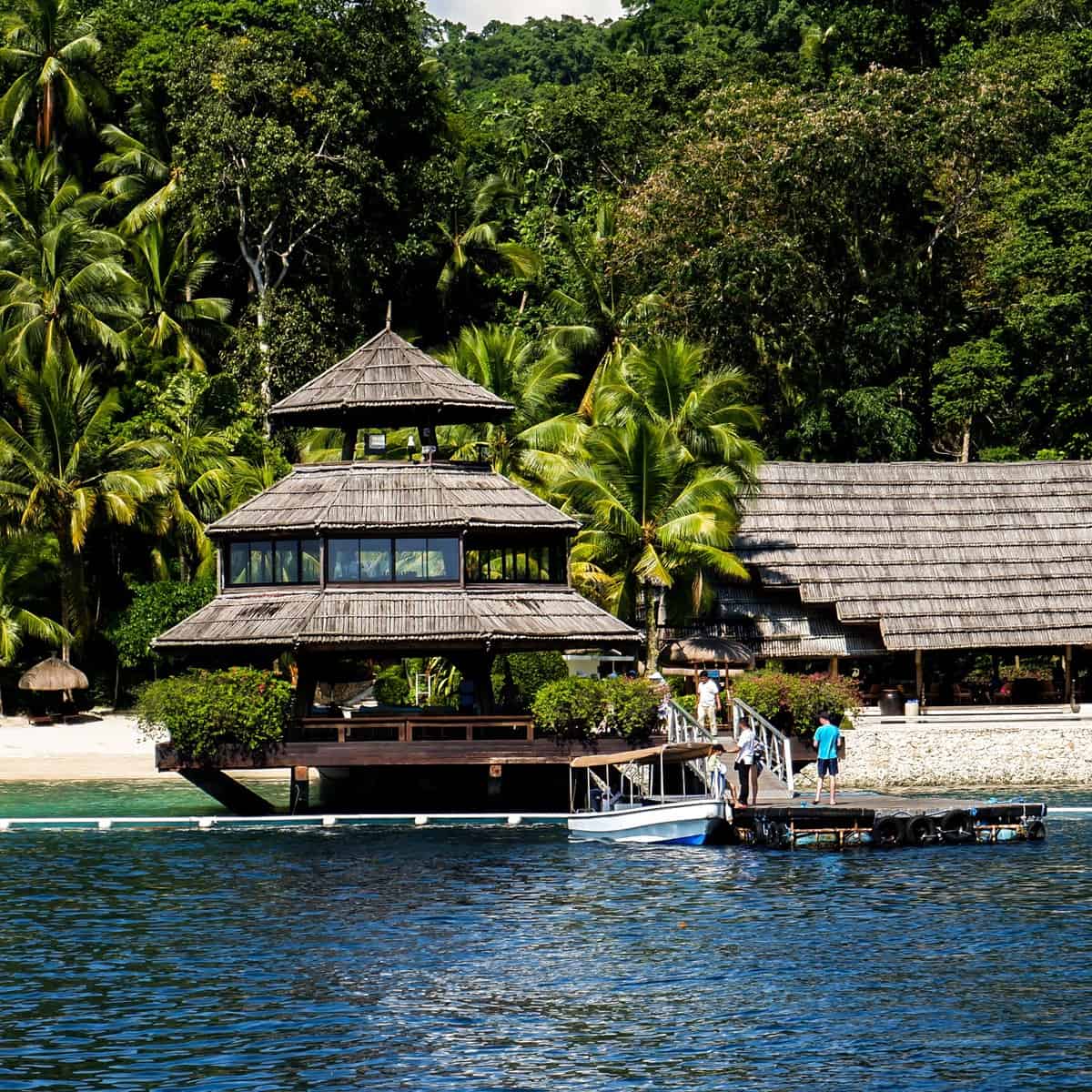
- Passport/Travel Document valid for at least six months beyond your intended stay
- Duly Accomplished Visa application form
- Proof of bona fide status as a tourist or businessman
- Confirmed tickets for return or onward journey
Remember to complete a BOQ e-Health Declaration Card before your departure.
Non-immigrant visas
Resident visa
If you want to stay in the Philippines long-term, a resident visa is necessary. This type of visa is typically granted to investors or foreigners who are married to Filipino citizens or highly skilled professionals who can contribute to the Philippine economy. Requirements for a resident visa may vary, but the following is always necessary:
- Valid passport
- Visa application form
- Medical examination report
- Police clearance from your country of origin
- Proof of sufficient financial capacity
Retirement visa
If you plan to retire in the Philippines, you can opt for a Special Resident Retirement Visa (SRRV). The SRRV residence ID card is good for two years and is renewable. The requirements and qualifications for an SRRV vary depending on your age, but some general requirements include the following:
- Valid passport
- Medical clearance
- Police clearance from your country of origin
- Proof of financial capacity, such as a pension or investments
For example, if you're over 50 years old and want to apply for an SRRV, you must make a $ 10,000 deposit in a Philippine bank and have a monthly pension of at least $800. The time deposit can be withdrawn later for purchasing a condo or similar living arrangement.
Further details and information about the SRRV can be found on the Philippine Retirement Authority website.
Remember, always check with the Philippine consulate in your home country for the most up-to-date information on visa requirements before making any plans.
Philippines Retirement visa types
SRRV Smile: Active and healthy retirees can apply with a $20,000 USD deposit.
SRRV Classic: Active retirees can invest in real estate with a deposit. Applicants over 50 need $10,000 with a pension of at least $800 (single) or $1,000 (couple). Those without a pension need $20,000. Property value should be $50,000 minimum.
SRRV Human Touch: Retirees needing medical care need a $1,500 monthly pension and recognized health insurance. The deposit is $10,000.
SRRV Courtesy: Retirees from recognized international organizations can apply with a $1,500 deposit.
SRRV Expanded Courtesy: Retired Armed Force officers with a $1,000 monthly pension can apply with a $1,500 deposit.
Deposits must go to the Philippines Retirement Authority (PRA) partner banks, including Bank of Commerce, Banco de Oro (BDO), Development Bank of the Philippines (DBP), KEB Hana Bank, Philippine National Bank (PNB), Shinhan Bank, and Union Bank.
Digital Nomad visa
In May 2023, the Philippines shared plans for a digital nomad visa that is expected to be open for applications by early 2024.
This visa will be extendable for up to 12 months. Although the minimum income requirement hasn't been finalized, it's likely to be approximately US$2,000 per month.
Considering living costs, a single person may need about $500 monthly for basic expenses and an additional US$400-US$700 for rent, depending on the location.
The cost of living in the Philippines
The cost of living in the Philippines is one of the factors that draws expats to the country. Here's how the cost of living in the country compares to some countries in North America and Northern Europe:
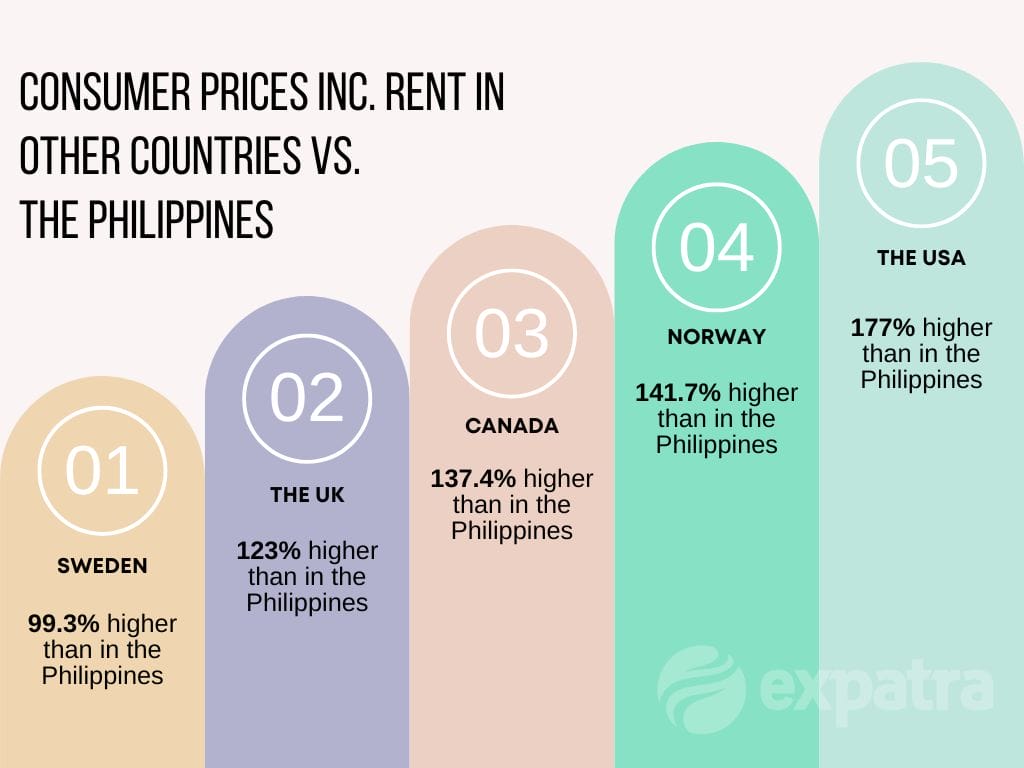
Let's talk about the various expenses you may encounter daily as an expat in the Philippines.
Housing
In Metro Manila, a one-bedroom serviced apartment can cost around $600-700 per month, including rent, homeowners' association fees, utilities, and internet connection. Most modern condominiums include amenities such as a fitness center and a pool.
However, if you prefer living in a less expensive area, the monthly rent for a 45 m2 furnished studio is around $500.
Eating out
Dining out or cooking at home are both affordable options in the Philippines. Cities, especially Manila, are filled with budget-friendly restaurants that you can find everywhere.
You can't miss the wildly popular fast-food chains like Jollibee, and it won't take long to stumble upon a Mang Inasal or another chicken-and-rice joint.
The best part? You can grab a satisfying meal for as little as $2 or even less! Trust me; it's hard to spend more than $4 and not get a reasonable portion.
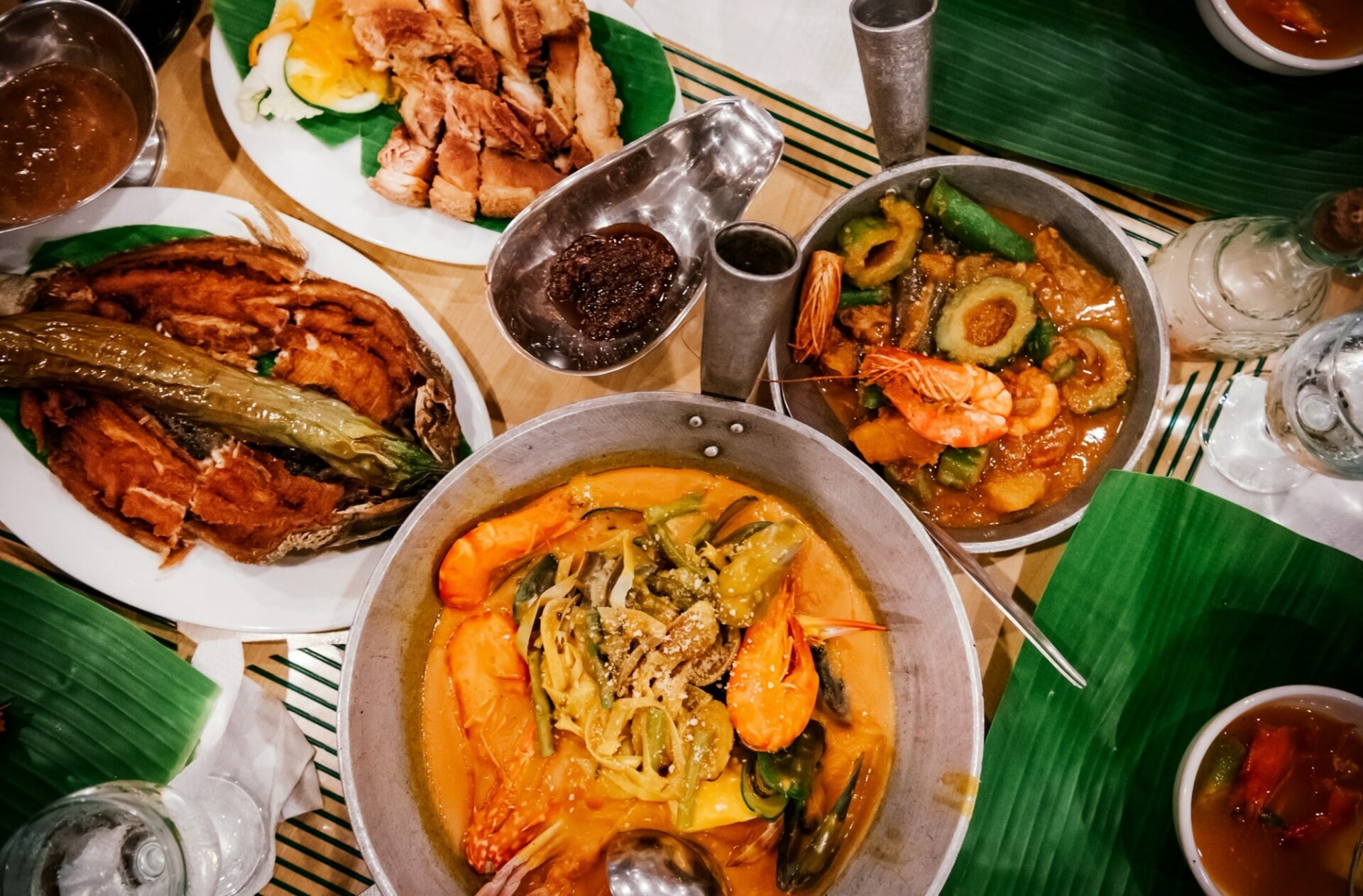
When it comes to dining in the mid-range category, things start to get really exciting, especially when you explore Filipino and other major Asian cuisines.
You'll find that these restaurants offer the best value for your money. So, if you're looking for a delicious main course with a little something on the side, you can expect to spend around $5 to $10. It's the perfect balance of quality and affordability, making your dining experience even more satisfying.
If you're in the mood to indulge in the culinary creations of top-notch restaurants, you'll find some fantastic options in Manila.
High-end restaurants will cost you more but still feel affordable. For a simpler set meal, you can expect prices to start around $15 to $30, which is reasonable considering the prestige and quality of the experience.
Groceries
Food is not expensive at all, especially if you buy all the ingredients at the local wet markets. They are incredibly cheap, and you get locally-grown produce.
Utilities
- Electricity - $80 for a small apartment
- High-speed fiber internet - $30-$60
- Water - $6-$15
Learn more about costs and expenses in our article: Living In The Philippines For $1000 A Month.
The Philippines as a retirement destination
According to the Expatra Global Retirement Index, the Philippines is in the top 30 retirement destinations worldwide. It is also one of the cheapest countries to retire abroad.
The index is based on the Expatra Global Retirement Survey that asks international retirees to rate their retirement destination’s infrastructure, climate, ease of settling down, value for money, friendliness, and other aspects of life in their retirement destination.
Here's how the Philippines scores:
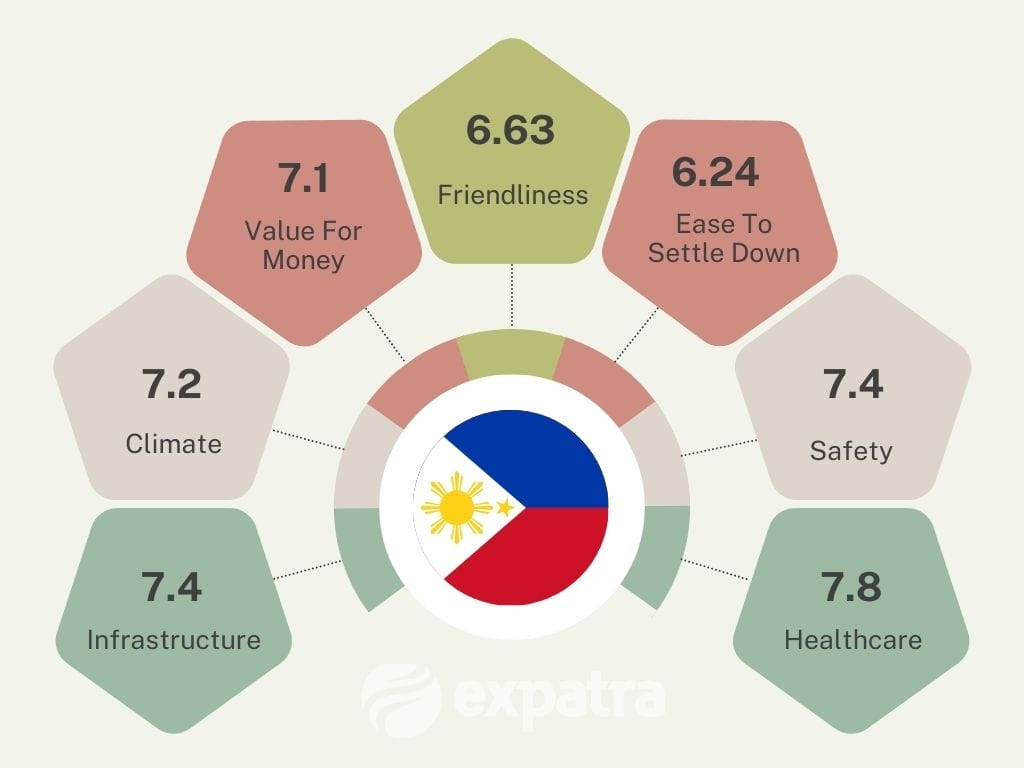
Highlights:
- Good retirement visa options
- Great nature and beaches
- Low cost of living
- A relaxed and slow-paced lifestyle
Transportation and travel
The country is well-connected for international travel, with several major international airports located throughout the country.
The Ninoy Aquino International Airport in Manila is the largest and busiest airport in the Philippines, serving as a hub for domestic and international flights.
Other major international airports include Mactan-Cebu International Airport in Cebu, Clark International Airport in Pampanga, and Puerto Princesa International Airport in Palawan. These airports offer direct flights to major cities worldwide, including Hong Kong, Tokyo, Seoul, Singapore, Dubai, etc.
Several regional airports throughout the country offer domestic flights to various destinations within the Philippines.
Domestic travel
Getting around within a city or between cities is very affordable, especially if you opt for local jeepneys, tricycles, taxis, or buses. Bus tickets typically range from $2 to $10.
When it comes to inter-island travel, you'll mainly have two options: flights or ferries. Flights are generally affordable and cost you between $30 and $50. Ferry prices vary depending on the distance. On average, a two-hour ride on an express catamaran boat with air conditioning costs around $6 to $8.
If you rely on public transport, expect to spend around $62 per month for unlimited use.
Climate and weather
It's a tropical country, so it is hot and humid almost all the time. In the Philippines, we have the dry and rainy/monsoon seasons.
The dry season lasts from February to June.
The rainy season starts in June and can last up to the end of January. However, it does not rain all the time during the rainy season. You can experience downpours a few hours a day, but sometimes it can stay dry for days, too.
As a rule, the Pacific regions are rainier and more exposed to monsoons. Western islands such as Boracay and Palawan are less so.
North is colder and has more monsoon exposure, too.
In the North of Luzon (Baguio, Banaue, Sagada), the temperature can drop to around 12/15 °C (54/59 °F) at night. In the rest of the country, it is hot and humid pretty much all year round. For example, the winter temperature in Boracay Island is 25/26°C (77/79°F).
Healthcare in the Philippines
PhilHealth is a state-owned insurance program that gives you access to public healthcare in the Philippines.
However, the public healthcare system lacks hospitals and clinics. There are more private hospitals in the country than there are public ones.
That's why many residents have private health insurance alongside PhilHealth. It ensures unrestricted access to all hospitals and clinics and guarantees a higher level of privacy, security, and comfort during hospitalization, particularly in critical situations.
PhilHealth is mandatory if you plan to stay in the country for six months or longer and are employed. Otherwise, you can either pay into PhilHealth voluntarily or choose private health insurance.
If you are not employed, you can join The PhilHealth program in the Informal Economy Member category and pay between $300 and $340 per year for access to state healthcare.
If you want access to private healthcare, you have two choices: pay out of pocket or get valid health insurance.
Here are some numbers: a hospital stay costs between $45 and $356 per night, depending on the quality of the facility. If you end up in the intense care unit, you will pay $533) per night on average.
High-quality healthcare is not available in every corner of the country, so if this is important for you, do your research beforehand.
This list of English-speaking doctors and medical facilities in the Philippines, compiled by the UK government, can help you.
Many expats opt for international health insurance that covers them in several countries. International health insurance can be quite expensive. To make sure you get the best value for money, compare international health insurance options from various providers to find the best deal.
Where to live in the Philipines
If you are after an urban lifestyle and need city facilities and amenities, let's talk about the most popular cities in the Philippines for expats.
Manila
As the capital city, Manila offers a bustling urban environment with numerous job opportunities, universities, and a wide range of amenities. Manila is the best option if you travel internationally, as Manila has four airports with flights to other Asian cities such as Bangkok, Jakarta, Ho Chi Minh, and Singapore.
There are some excellent international schools here too.
However, Manila is also known for its traffic congestion and pollution, for being hectic and noisy.
Makati
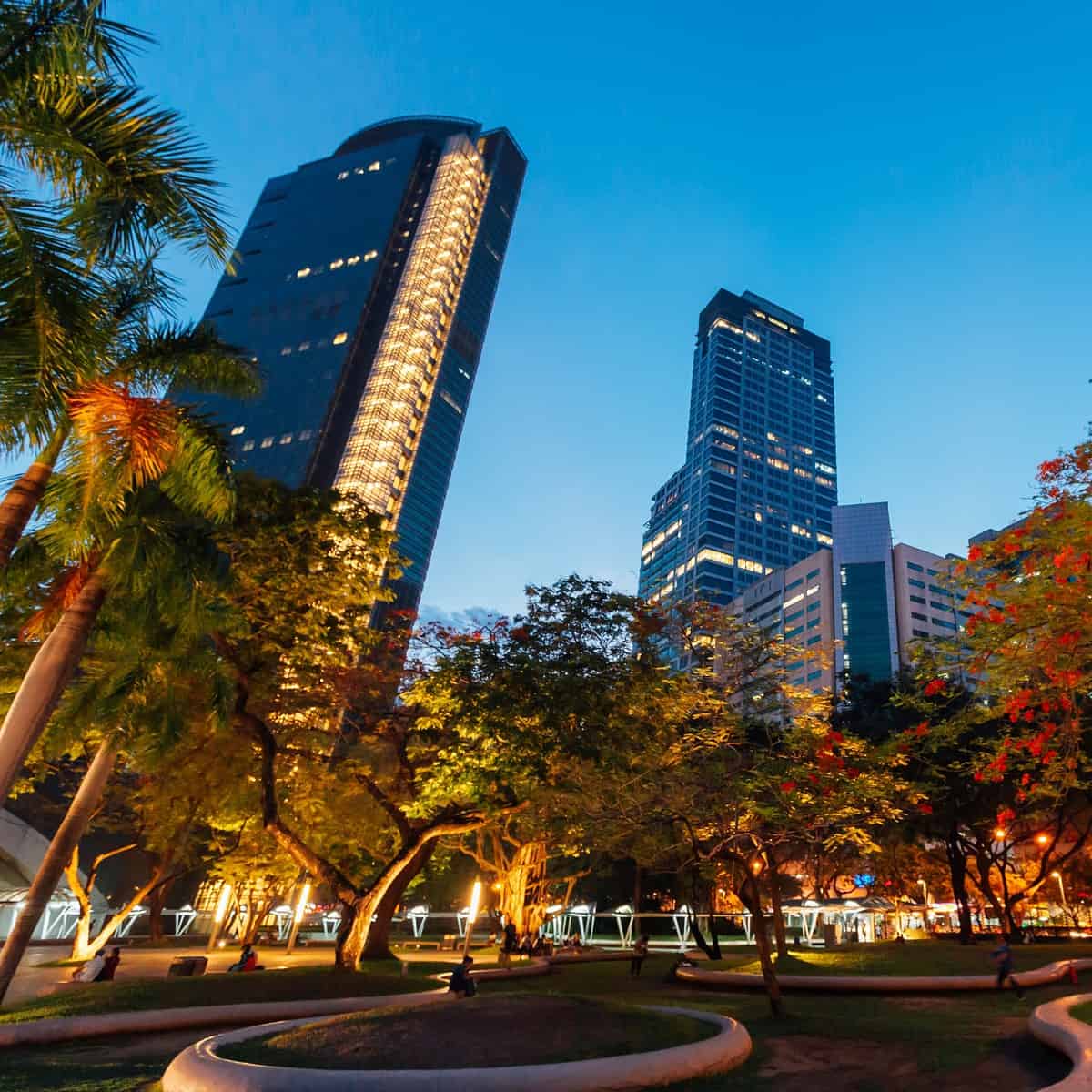
Makati is in the Metro Manila region. Known for its central business district and upscale residential areas, Makati is ideal if you prioritize convenience and easy access to various amenities.
Bonifacio Global City (BGC)
Bonifacio Global City is a financial business district in Taguig, Metro Manila. It is located 11 km southeast of the city of Manila. A modern, master-planned community offering a high quality of life, BGC is perfect for families and young professionals.
Cebu City
Renowned for its beautiful beaches, Cebu is a brilliant option if you want a life in a seaside city.
The cons are frequent typhoons, limited public transportation, and flooding during the rainy season that makes it difficult to get around.
Best areas to consider in Cebu
Banilad: A peaceful neighborhood with a mix of residential, commercial, and entertainment areas, Banilad is suitable for both expats and locals.
Mabolo: With numerous condominiums, malls, and restaurants, Mabolo is a convenient location for urban dwellers seeking a balance between work and play.
Davao City
For a more laid-back lifestyle, consider Davao City. It's a more peaceful and reflective lifestyle, completely different from what you can have in Manila. It has even a lower cost of living compared to Manila and Cebu City while still offering a good quality of life with modern conveniences.
Best areas to consider
Buhangin: A rapidly developing area with new residential communities and shopping centers, Buhangin is attractive if you are looking for modern amenities and affordable housing options.
Matina: A well-established neighborhood with schools, malls, and hospitals, Matina offers a comfortable living environment for families and professionals.
More traditional and less urban destinations
El Nido: Located on Palawan Island, El Nido is a tropical paradise known for its stunning beaches, crystal-clear waters, and limestone cliffs. In 2020, the upgrade of telecom towers made faster internet available here, and now the place is a magnet for digital nomads.
Subic Bay: An economically thriving area benefiting from the Subic Bay Freeport Zone, it is very attractive for expats seeking a less hectic environment while being close to a big city. You can find more details in our Living In Subic Bay guide.
Bohol: Bohol is a popular island destination in the Central Visayas region of the Philippines. It is known for its beautiful beaches, stunning landscapes, and unique attractions like the Chocolate Hills and the Tarsier Sanctuary.
Panglao: Panglao is an island in the Central Visayas region of the Philippines, just off the coast of Bohol. It is known for its beautiful beaches, crystal-clear waters, and extraordinary marine life.
Apo Island: This small volcanic island off the coast of Negros Oriental in the Central Visayas region of the Philippines has the most amazing coral reefs. If you are into snorkeling or diving, it is just the place for you.
Boracay: Boracay is an island in the Western Visayas region of the Philippines. It is considered one of the most beautiful islands in the country and is very popular with tourists and expats. The cost of living in Boracay is relatively high compared to other islands in the Philippines, but it is a very attractive option if you are looking for a peaceful and fun-filled lifestyle.
For more information on various locations, read our guide on the Best Places To Retire In The Philippines.
Education
Public schools
In the Philippines, public schools provide free education for students from primary to high school levels. The curriculum emphasizes core subjects like mathematics, science, language, and humanities.
You can enroll your children in public schools to experience the local educational system and become a part of the Filipino community.
However, it's important to note that lessons are predominantly taught in English and Filipino, which could be challenging if your children aren't familiar with the languages yet. Also, public schools often have overcrowded classes and limited resources.
International schools
Alternatively, you can opt for international schools that cater mainly to expat families. These schools often follow curriculums such as the globally recognized International Baccalaureate (IB) program or the Cambridge International General Certificate of Secondary Education (IGCSE).
With a more diverse student body and a stronger emphasis on well-rounded learning, international schools can provide your children with a comfortable transition to their new environment.
Here's a list of some reputable international schools in the Philippines:
- International School Manila
- The British School Manila
- German European School Manila
- French School of Manila
Keep in mind that tuition fees for international schools can be between $ 13,000 and $27,000 a year. Also, these schools often have limited slots available, making it essential to begin the application process as soon as you can.
Working in the Philippines
Job opportunities
In the Philippines, employers usually organize work permits for their expat employees. It is recommended to secure a job before moving to the country, as obtaining a work permit can be challenging.
For certain positions, employers must prove that a Filipino citizen cannot fill a position offered to an expat before the permit is granted.
The Philippines offers job opportunities in various sectors, including:
- Information technology
- Business process outsourcing
- Tourism
- Healthcare
To make your job search more effective, consider networking, attending industry events, and using online job portals.
Opening a business
Here are some steps to guide you through the process of starting a business in the Philippines:
- Choose a business structure: You can register your business as a sole proprietorship, partnership, or corporation.
- Register your business with the Department of Trade and Industry (DTI) for sole proprietorships or the Securities and Exchange Commission (SEC) for partnerships and corporations.
- Obtain a Barangay Clearance and secure permits from the local government unit.
- Register your business with the Bureau of Internal Revenue (BIR) and obtain a taxpayer identification number (TIN).
- Register your business with the Social Security System (SSS), Philippine Health Insurance Corporation (PhilHealth), and Home Development Mutual Fund (Pag-IBIG).
Research local regulations and requirements to ensure your business complies with Filipino laws. The Philippine government's official portal can be a helpful resource for navigating the process.
Buying property
In the Philippines, as a foreigner, you cannot own land, but you can own condominium units or apartments in high-rise buildings as long as the foreign ownership does not exceed 40% of the development.
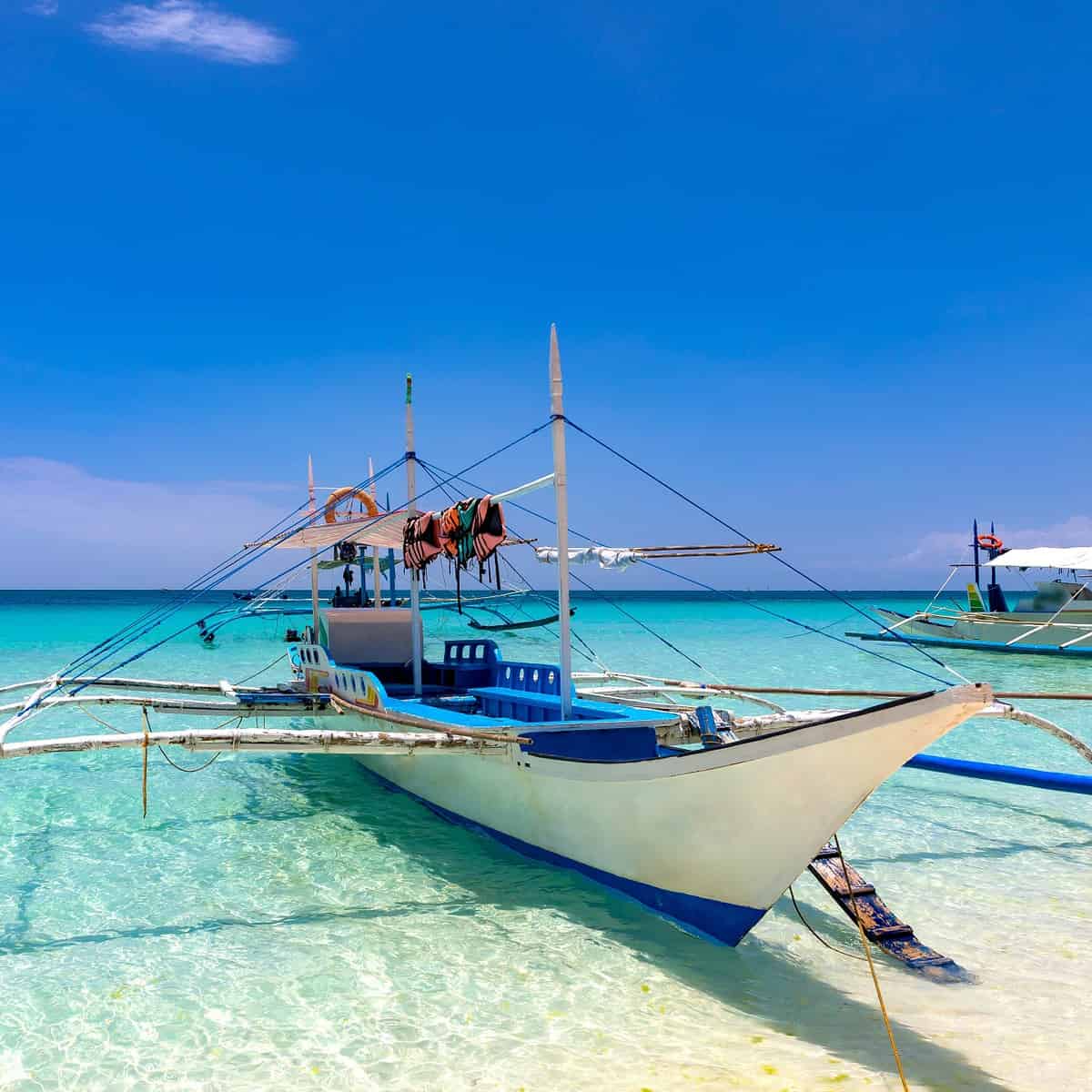
Alternatively, you can purchase houses, but not the land on which they are built. Leases on land are also available for up to 50 years, with the option to renew for an additional 25 years.
If you want to buy land, the options are very limited. One approach is to have the land owned under the name of a Filipino spouse. Or you may acquire land through inheritance or by establishing a corporation, with foreign ownership limited to a maximum of 40%. The maximum allowable area for residential purposes is 1,000 square meters for urban land or one hectare for rural land.
When buying property, it is important to work with established developers and licensed real estate agents or brokers, especially when dealing with off-plan or pre-selling properties.
The purchase process typically involves signing a binding notarized Deed of Sale after inspecting the property and reviewing the relevant documents. It is advisable to enlist the services of a reputable sales agent who can provide information and assistance, including guidance on mortgage loans if needed.
When buying condominiums, a down payment of 10% to 30% is usually required. Ownership of condominium units is indicated by the Condominium Certificate of Title (CCT), but the transfer of title is typically executed once the property is fully paid.
It can be a bit tricky to navigate through the legalities, so make sure you have trustworthy guidance and help.
Culture and lifestyle
Traditions
In the Philippines, you'll find interesting traditions that reflect the country's diverse cultural heritage. Festivals and celebrations, such as the colorful Sinulog or the Ati-Atihan, showcase the blend of indigenous, Islamic, and Spanish influences.
As a predominantly Catholic nation, religious events like Christmas and Holy Week play a significant role in the lives of the locals, with unique rituals such as the "Simbang Gabi" or the "Pahalik sa Santo."
Languages
Moving to the Philippines, you'll soon realize the linguistic diversity, with over 170 recognized languages spoken across the archipelago.
While Tagalog and Cebuano are the most widely spoken, English is also an official language and widely understood, making it easy for you to communicate and experience the local culture.
Food
The culinary scene in the Philippines offers a delightful gastronomic experience that encompasses a blend of flavors and cooking styles.
As you explore the local cuisine, you'll come across popular dishes like adobo, sinigang, and lechon, as well as various rice and noodle dishes.
Street food culture rivals neighboring Asian countries, providing a wide array of options like fish balls, kwek-kwek, and balut. Remember to satisfy your sweet tooth with Filipino desserts such as halo-halo, leche flan, and bibingka.
Safety tips
When moving to the Philippines, it's essential to keep safety in mind. Here are some tips to ensure a smooth and secure transition:
Traffic safety
The traffic in the Philippines can be unpredictable and chaotic. To stay safe, always be aware of your surroundings and follow local traffic rules.
If you plan on driving, familiarize yourself with the local driving customs and try to avoid rush hours.
When crossing the streets, remember that pedestrians do not always have the right of way, so be cautious and wait for a safe moment to cross.
Personal safety
Be aware of pickpockets and snatchers, especially in crowded areas. Keep your belongings secure and avoid displaying expensive items like smartphones and jewelry.
When exploring unfamiliar places, stay in well-lit and populated areas. It's best to avoid going out alone after dark.
Emergency preparedness
Familiarize yourself with the nearest hospitals, emergency numbers, and how to summon assistance in an emergency.
The Philippines is prone to natural disasters like typhoons, earthquakes, and volcanic eruptions. Pay attention to local news and weather forecasts, and be prepared with an emergency plan and supplies.
Mosquitoes and dangerous wildlife
There are mosquitos, but not so many in the residential areas. We do have cases of dengue, especially in September) but if you take reasonable care and precautions, you can avoid it.
The Philippines is also home to a variety of different snake species, and some of them are venomous, including a range of cobras, vipers, coral snakes, and sea snakes, which can potentially kill humans if they feel threatened.
But they are shy creatures and avoid areas of human activity. I have lived in the Philippines since 2010 and don't know anyone who has suffered a snake bite.
Moving to the Philippines - final thoughts
Living in the Philippines can be an exciting and fulfilling adventure. With its affordable cost of living, diverse cuisine, stunning landscapes, and warm-hearted people, it's a place where you can create lasting memories and find your own tropical paradise.
While settling into a new community may take time, the friendly and welcoming nature of the Filipino people makes it easier to integrate and build connections. Whether you're seeking adventure in the 7,107 islands or enjoying the comforts of modern city living, the Philippines has something to offer everyone.
Advice and assistance
If you're considering relocating to the Philippines, our country expert, Elena the, can provide practical help and support throughout the entire process.
From navigating visa requirements and understanding property ownership regulations to finding accommodation and offering guidance on local customs and culture, Elena can help make your move as smooth as possible.
Contact us if you would like Elena's help to start your exciting journey of living as an expat in the Philippines.
Secure Peace of Mind with Best-Value International Health Coverage
International Citizens Insurance provide free, no-obligation quotes from the leading international health insurance providers with plans tailored to meet your needs. Trusted by thousands of expats worldwide.




